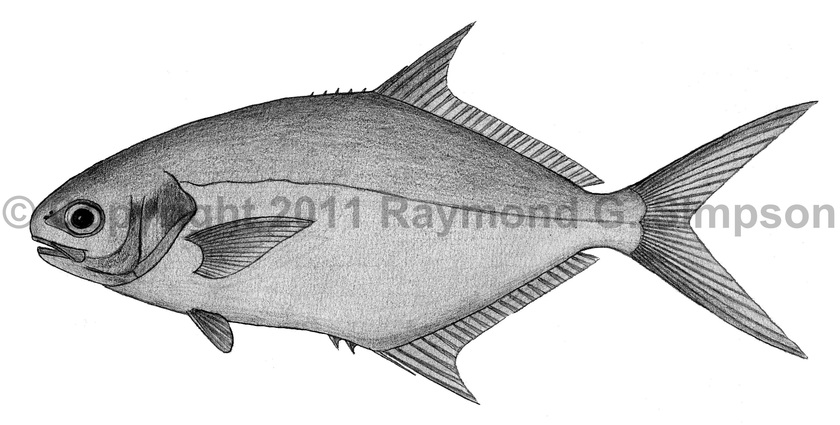
Common Name
Florida Pompano
Year Described
Linnaeus, 1766
Identification
Dorsal Fin: 6 spines (the first embedded in large fish), followed by I, 22-27
Anal Fin: 2 spines, followed by I, 20-24
Pelvic Fin: I, 5
Gill Rakers: 5-7 upper, 8-14 lower
Vertebrae: 10 precaudal, 14 caudal
Body spade-shaped and deep, with a rounded dorsal profile and a blunt snout. Eye small with jaw reaching under mid-eye. Teeth presrnt in small fish but disappear in larger fish (>20cm). Dorsal and anal fins with short anterior lobes, not reaching caudal fin when depressed. Pectoral fin and pelvic fins small. Tail large and deeply forked. Lateral line undulating on anterior half, straight on posterior half with no scutes. No caudal groove or keel.
Color
Silvery overall with light grey to bluish dorsal surface. Belly and anal fin yellowish to gold. The dorsal fin and tail are dusky to yellowish with a darker anterior lobe. No spots present on side.
Size
Averages to 35cm. Maximum size to 63cm.
Habitat
Coastal with adults found in deeper waters. Juveniles form large schools in the surf zone, adults in smaller groups. Usually found over soft bottoms, often in estuaries.
Range
Massachusetts to Brazil, including the Caribbean islands.
References
Smith-Vaniz, W.F. 2003. Carangidae (pp 1426-1468). In: Carpenter. 2003. The living marine resources of the Western Central Atlantic v. 3.